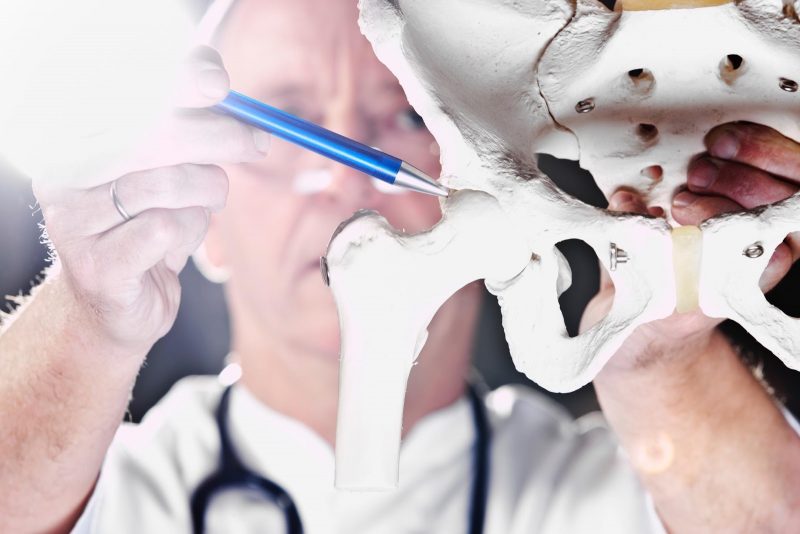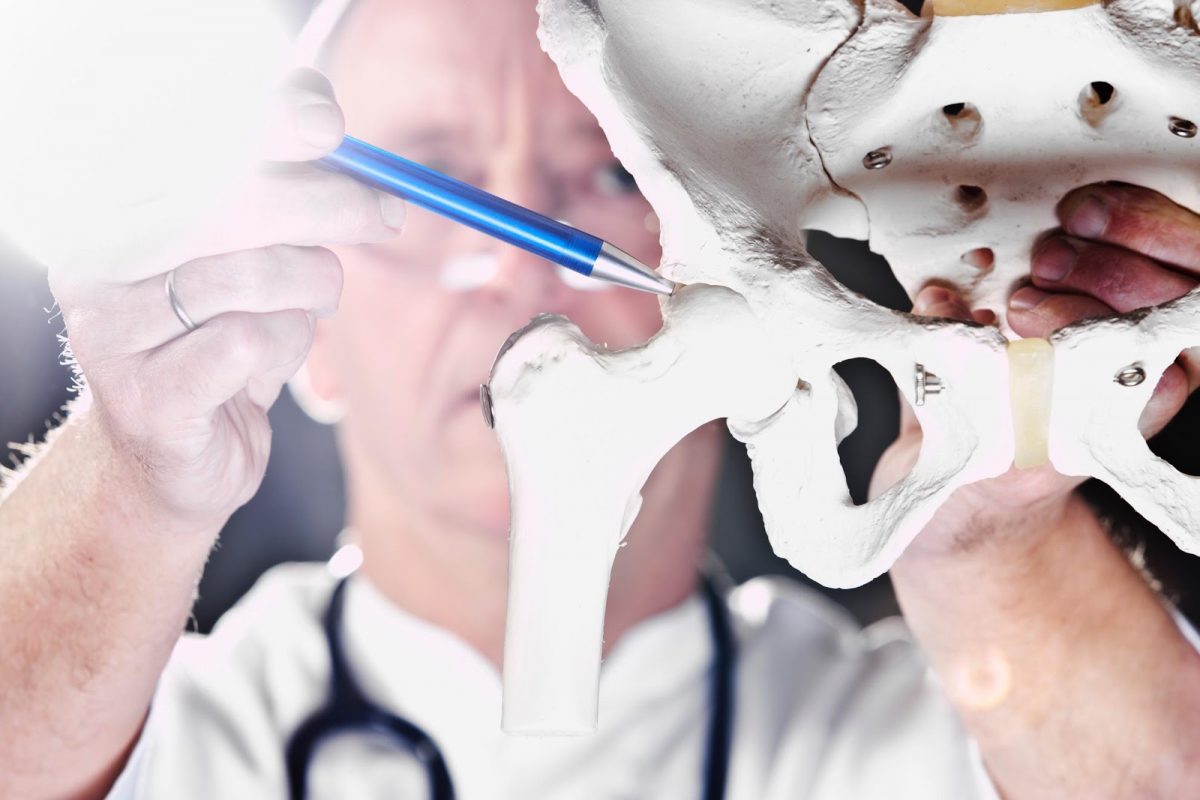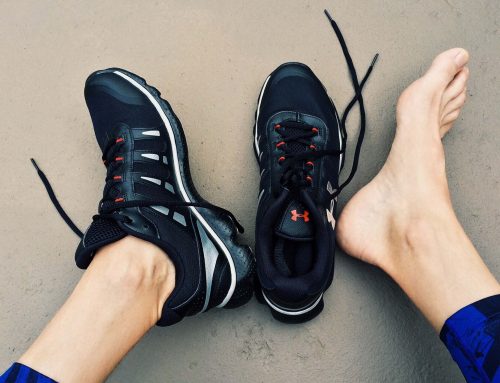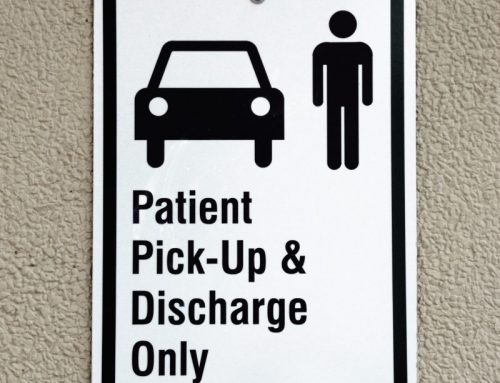
Hip replacement surgery is used to manage the signs and symptoms of degenerative osteoarthritis of the hip. The surgery is an open procedure that involves replacing both the socket and the ball of the joint. This can be performed with a surgical incision either at the back of the hip (which is the traditional method and called the “posterior approach”) or the front of the hip (this is a newer method and called the “anterior approach”). Your surgeon will discuss with you as to which approach will most benefit you.
The anterior approach has an advantage in the early stages of rehabilitation in that there is minimal risk for postoperative hip dislocation. However, by the 12- week mark, both anterior and posterior approach surgeries have very similar outcomes. Both types of surgery can assist in the management of osteoarthritic hip pain and immobility.
Risks- There is always a risk with any surgery, including infection or other postoperative complications such as problems with general anaesthetic, DVT, or ongoing pain. There is a complication risk with the anterior approach of nerve irritation at the front of the hip joint. However, this risk is minimal. With the posterior approach, your surgeon places his surgical incision at the back of the hip, which does disrupt some of the gluteal muscles. After your surgery, while your muscles are healing, there can be an increased risk of postoperative dislocation of the hip. To prevent this, very simple precautions can be followed. Do not bend your hip above 90 degrees or cross your leg across your body, as this can increase the risk of dislocation, while the gluteal muscles are healing and becoming stronger. Once the muscle and soft tissue system that supports the hip has improved in its strength, the risk of dislocation significantly diminishes.
Examples of hip movements to avoid in the first 6 weeks would be:
1. Sitting in a very low chair. To see if the chair is the right height, simply place the back of your legs to the chair and if it is at the knee crease or above, it is not too low for you to sit on. However, if the back of your chair is below your knee crease, it is potentially too low, which will result in your knees being higher in the chair, which is more than 90 degrees and will increase the risk of your hip dislocating in the first 6 weeks after surgery.
2. Sitting on a chair and then bending forward to put your shoes and socks on. When you are sitting, your hip is already flexed to approximately 80-90 degrees. If you significantly bend forward to touch your toes or get something off the floor in this position, you are taking your hip beyond 90 degrees significantly, which can significantly increase the risk of dislocation. It is best to use slip on shoes and avoid getting things off the floor for the first six weeks. You can use equipment such as pick up tools to assist in that regard.
3. Bending over to pick things off the floor. Simply take your affected hip behind you if you are bending over to pick something up off the floor, as this will prevent your hip flexing beyond 90 degrees. Even better get a friend or family member to assist you by picking things off the floor or helping you with your shoes and socks in the early stages after your surgery.
Directly following your surgery a physiotherapist will assist you get out of bed and take your first steps. This can sometimes be a bit daunting! But your hip will be safe to weight bear on (unless your surgeon tells you otherwise) and you will have the assistance of a therapist and usually a walker or crutches to help. For the first few days in hospital it is important to allow your therapists to assist you with regular short walks to gain your confidence and strength. Your therapist will also guide you with regular daily exercises to start your hip joint moving in a healthy way. It is very important to do your short exercise routine regularly. Each day you will do a bit more activity, and when the therapists and surgeon feel you are ready you will be allowed home, often with crutches for the first week to three weeks. Once you are home you will often be required to see a physiotherapist for rehabilitation.
Postoperative physiotherapy rehabilitation for anterior and posterior approach surgery is very similar. The only exception is that for the first 6 weeks, a posterior approach needs to exercise some caution with protecting the hip from dislocation risk.
Your exercises will be guided by your postoperative physiotherapy in hospital as well as your surgeon. Your exercises will include ‘mobility’ exercises- to ensure your new hip is moving in a healthy way- as well as ‘strengthening’ exercises- to ensure your hip muscles get strong again and allow you to support your body for walking, getting in and out of chairs or later climbing stairs. Exercises will be modified by your orthopaedic surgeon and your postoperative hospital physiotherapist and tailored to your individual circumstances.
It is very normal to have pain after your surgery. Your surgeon will provide medication for you to assist reduce your pain and allow you to sleep as well as do your exercises. It is also very common to be tired for the first few weeks! The general anaesthetic combined with your internal healing processes can mean you are more fatigued for a few weeks. Allow rest breaks throughout the day and do not expect too much of yourself in the first few weeks. Your fatigue will gradually and naturally subside.
Like to know what you can do before surgery?
Our pre-operative recommendations include:
1) Keep active! We know that arthritic pain can become worse with too much activity (such as very long walks), but did you know it can also be worse with TOO LITTLE activity? Simply remember the time when you rested or sat down too long – your pain can worsen with this and you feel it when you try to get up and going! The key is regular activity within your comfort levels. Research supports if you keep your pain levels below 3 or 4/10 during activity (if 10/10 is your worst imaginable pain), then this activity is safe for you to continue with and can even benefit joint health. Regular movement and light loading can stimulate the joint fluid that provides nutrition to the remaining healthy cartilage- so it is very important to stay active. Low levels of pain are expected and are not an indicator of more damage or wear. Monitor your levels and stay active!
2) Stay Strong Preoperatively it is important that you maintain a ‘bank’ of hip strength as best you can to prepare you for your surgery. Hip stretches prior to your surgery are not particularly recommended or beneficial. However, gluteal strengthening exercises can assist in ensuring that your postoperative rehabilitation runs smoothly. Doing your simple bridges and split bridge exercises once a day to try and build on your strength is a nice way of maintaining your strength.
3) Lose Weight! It is also recommended to keep your BMI and body weight down which might mean you need to lose weight in the lead up to surgery. For every additional kilo of body weight you carry it places additional strain on the joint! Research has found that body weight is largely affected by the foods you eat. So choose wisely, smaller portions and ditch the sugary drinks that contain empty calories. See a local dietician for advice specific to your health.
Like to know more about osteo-arthritis and what you can do to help yourself? Click here to access a full range of videos and information to help you with your hip!






Leave A Comment